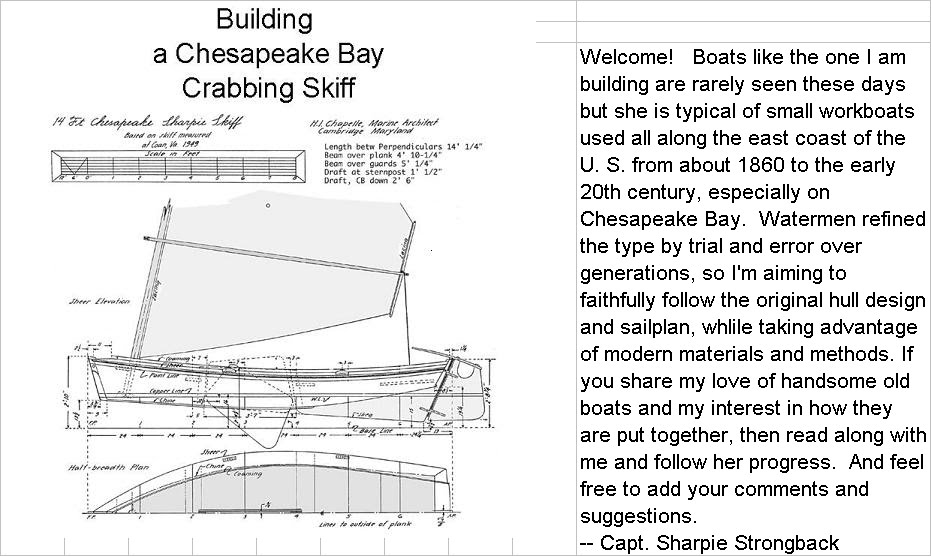Sunday, Sept. 12, 2010
Sunday's jobs were making the mast step and making a pattern for the coaming. The mast step is simple enough: a block of white oak with a hole cut out into which the tenon in the heel of the mast will fit. The only complications are that the mast is to rake back at 13 degrees. The bottom profile where the step attaches rises at 5 degrees, so the step must point an additional 8 degrees aft, for the mast to fit in the step. The other consideration is drainage. Water in the bilge or on the mast must drain away easily and not leave the heel of the mast wet. So I made two wedges to brace the step to the right angle, and attached them to the underside of the step block.
I drilled the step hole all the way through the step block. Though the picture doesn't show it, I held the wood down with a clamp while drilling.
To keep water from collecting under the step block I used the router to cut a limber hole so water will drain back to the low point in the bilge. While I had the router going I eased the sharp top edges, and here's the completed step, ready to be screwed to the keelson:
The day's other project was to make a pattern for the deck coaming. This step is out of sequence, as I won't attach the coaming until the thwarts are done and the frames and inside sides are sealed and painted. But I was looking for jobs to be done while the thickness planer is unavailable.
I made the pattern out of three panels of doorskin material, glued together. I marked 1 5/8" above each frame which will be the top edge line of the coaming.
When the pattern was removed and laid flat I connected the top line marks with a long batten. The coaming is to be 3 1/2" wide, but as you can see it will curve considerably. The plans call for only 3/8" thickness, but that just seems too flimsy to me. I'm aiming for 5/8". But either way, it will be physicaly impossible to edge-bend a solid piece by the 5 1/2" curve required. If the coaming is to be a solid piece, it will need to be cut from a clear hard board 9" wide and 13 1/2 feet long. I'll need two such planks. If I can't find planks that big without breaking the bank, there's a plan B that will be more work. I can make the coaming out of two thicknesses of 6mm plywood. One thickness can be from two 8' lengths, and the other from an 8' length in the middle and 4' lengths on each end, so the joints are staggered. That will give me a strong piece 1/2" thick, which I can top with a 1/4" cap, cut from molding stock, to protect the edge grain of the plywood.
Monday, Sept. 13. Today started with a surprise call that the thickness planer was repaired and ready to be picked up in Tampa. Several projects had been awaiting that tool's return.
Before heading across the Bay for the planer, I laid out all my scrap plywood to see if I have enough for the deck, and for the coaming if I make that of plywood. The answer is I have enough for the deck, but not enough for the coaming. With that knowledge I went to a specialty lumber yard. They had nothing suitable and big enough for solid coaming stock, but they did have a few sheets of damaged 6mm Okume marine plywood at a good price. A partial sheet is all I need, so I'm all set for coaming material.
Tomorrow I'll make a decision on a sailmaker, seal the frames with epoxy, measure the thickness of the completed centerboard to know how thick to make the vertical spacers ("headledges") in the centerboard trunk, and screw the mast step in place. I also need to make a router table that I can use outdoors, so I don't fill up the workshop with router shavings. Probably won't get it all done, but so what.
A watcher who shows interest without offering advice. What more could you ask for?
Monday, September 13, 2010
Subscribe to:
Post Comments (Atom)







No comments:
Post a Comment